|
Hypothetical specimen under a confocal microscope. |
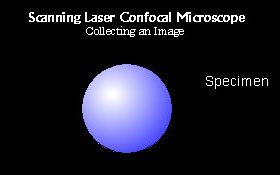
|
|
The initial scan collects an optical slice of the image and then stores
that image in the computer. |
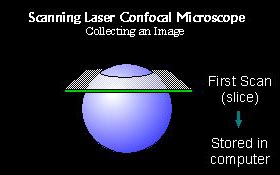
|
|
The stage is moved in the Z direction and another optical section is
taken. The digital image is again stored in the computer. |
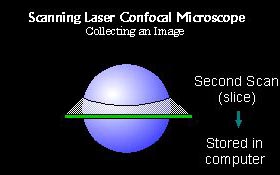
|
|
Each optical slice taken is within the acceptable range of
depth-of-focus. This means each slice appears sharp to the eye. |
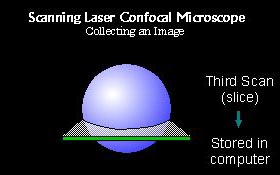
|
| The final optical slice is scanned and stored in the
computer. |
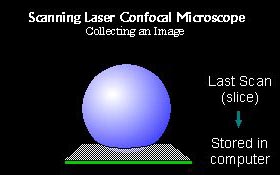
|
|
Once all the slices are stored in the computer an image stack can be
created. The number of slices in a stack can be from 1 to 200. |
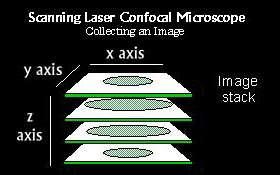
|
|
From the image stack an image is produced called a projection. For
thicker specimens, more sections provide greater Z-resolution.
This image is a projected from the top and is called an XY projection. |
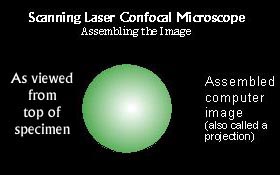
|

